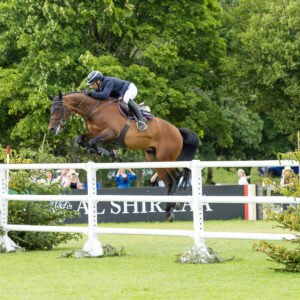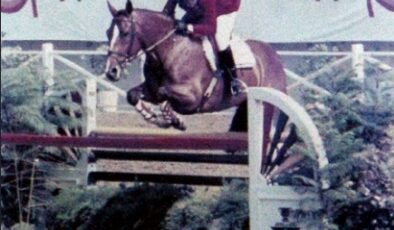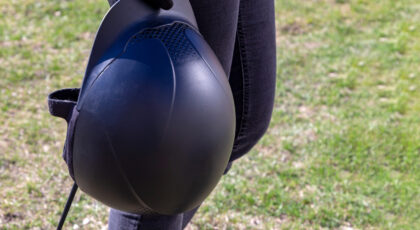If you have the space for it, a cross country schooling course at home can be a great asset to your training program.
After deciding that you have enough room, the challenge is that you need multiple fences to really get the job done.
Usually the best solution is to install a few permanent features and then add some portables so that you can mix things up to ask different questions in your training. Remember that you can always beef up your cross country schooling course with some standards and rails from your show jump collection, too.

A simple ditch, a simple water crossing, and a few small portables of different sizes—beginner novice through training or prelim—are a good start. You need fences of different shapes, too: a table, a rolltop, an oxer, and ideally something with a cutout underneath it (these often catch young horses out on course).

Keep in mind that while portable jumps are just that—portables—dragging them around every time you want to ask a new question, in reality, is inconvenient. Well-built fences that are lightweight enough that you don’t need superhuman strength (or a tractor) to move them every time you want to change something is important when you consider what types of portables you want.
We’ve found that a lot of people who are trying to get young horses going confidently are starting to see corners, skinnies, wedges and brush at prelim and even at training level. All of those types of questions can be introduced in a small, easy fashion.

While it can seem somewhat daunting to buy all the jumps it might take to get a horse through the levels, when you break it down to its simplest form it doesn’t take as much as you might think. The progression of the levels really makes sense, and there are simple ways to look at how to prepare your horse to move up the levels, one question at a time.
To keep things straightforward, break the course down into its simpler components. A cross-country course consists of galloping fences and combinations. It’s easy enough to throw a few fences out in a field and practice jumping them individually or put them together to make a small course.
As the levels go up, the number of combinations increases and the complexity of the questions increases. In your schooling you can build a variety of combinations, developing your horse’s confidence in the process.

For instance you can build a ditch, then create a ditch and rails. After that, use a couple of portables to make a “coffin.” You can build whatever else you can think of that involves a ditch, using a combination of portable cross-country jumps and standards and rails.
With a little ingenuity, you can school multiple questions effectively using just a few creatively arranged jumps. And of course when there are no constraints on space and budget, the only limit is your imagination.


 October 26, 2020
October 26, 2020 

























